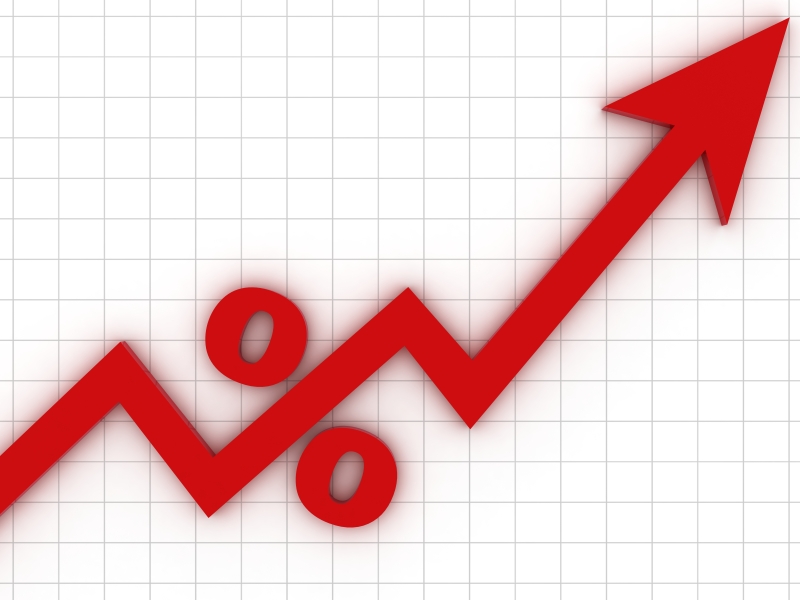
Will Rising Rents Be Offset by Higher Cap Rates In 2018?
With retail vacancy in the Inland Empire hovering around 7%, most shopping centers, if not fully leased, are nearly full. As mentioned in my last blog, the majority of the vacancy is confined to a very small percentage of the properties in the market.
As a result, I anticipate continued increases in rental rates in 2018. That being said, the prospect for higher cap rates could certainly be a headwind for higher retail property values.
Here are some “big picture” items worth noting:
- As of this past week, the 10 year treasury has risen to 2.6%
- It is widely believed that inflation may be pressured by the economic stimulus of the Trump tax plan, a nation and region at full employment, and rising material costs due to worldwide economic growth.
- The Fed has clearly stated that quantitative easing is being unwound (which will increase the supply of long term debt instruments in the market).
- As I write this, the nation’s federal debt is at $20.6B. If you have never checked out the federal debt clock page, it is pretty cool – http://www.usdebtclock.org/. Many would argue that it is because of this debt that the U.S. treasury rates are higher than other countries such as Germany (.57%), U.K. (1.36%), Spain (1.4%), Switzerland (-.03%).
Due to the reasons listed above, we could easily see higher long term interest rates going forward. Historically increases in long term interest rates have resulted in higher cap rates, which lowers retail investment property values.
So the question for 2018 is whether higher rents can offset higher cap rates?
The challenge for retail is that interest rates adjust every day, but rents do not. So if cap rates go from 6.25% to 6.75% (an 8% increase – 6.25% x 1.08% = 6.75%), then rents would have to go up 8% to maintain the value of your property. With most leases having built in increases of 3% per year or less, the expectation of rents increasing by 8% is completely unreasonable.
Here’s where I see property values going forward:
- Single Tenant Retail Properties – I expect single tenant cap rates to trend higher. The combination of rising short term rates and long term rates will make investing in single tenant retail properties less desirable for those that were moving cash into this product type. However, I recognize that you can’t do a 1031 exchange into non-real estate assets and therefore, as baby boomers continue to transition from higher management properties, demand is still likely to remain reasonable for these assets.
- New Multi-Tenant Retail Properties – Cap rates for newly constructed multi-tenant retail properties will likely trend higher due to the fact that lease rates are fixed for the long term and borrowing costs are likely going to be higher resulting in a need for higher cap rates to maintain similar cash flow.
- Existing Multi-Tenant Retail Properties – Multi-tenant properties with lease rates that are at market or even below with staggered lease expirations may actually be the beneficiaries depending upon how strong the belief becomes for higher lease rates. In the extreme situation, if you believed the lease rates would double over the next year, you would gladly pay a lower cap rate for this income stream. For those properties that investors believe might see strong lease rate increases within the next few years, cap rates may remain stable even if long term interest rates increase.
- Triple Net Charges – One item that could derail lease rate increases is an increase in triple net charges. Labor and material shortages, potential increases in insurance rates resulting from $300B of natural disasters this past year, and the possibility of increased property taxes if the Democrat’s proposal for a split roll property tax passes could easily result in higher triple net charges that off-set the reasons for higher lease rates. We are hearing from our fellow Retail Brokers Network members that rising property taxes throughout the country are making deal making more challenging.
- Technology & Automation – Oh, and let’s not forget the constant change in the retail world due to technology and automation which could be another factor affecting demand for retail space.
I think 2018 is going to be an interesting year for retail investment sales. There are so many factors swirling in the marketplace. At the end of the day, the market is subject to general trends, but each property is also unique. We look forward to working with our new and existing clients to review the best options for their retail property in the coming year.